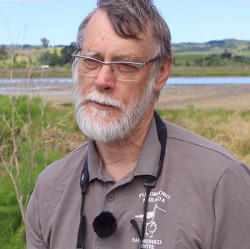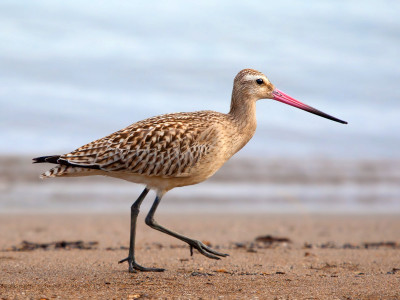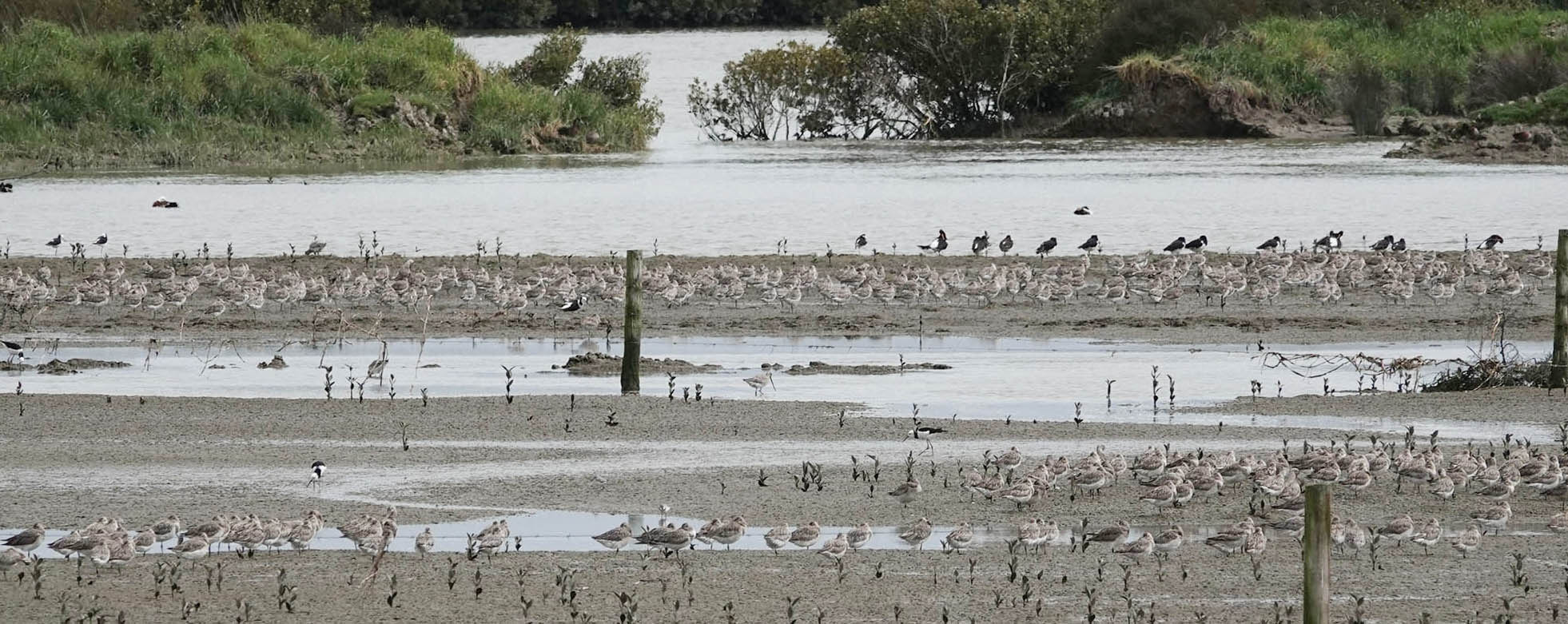 “When I was first told the council had bought the land, they made it clear that it wasn’t bought for the birds but to shore up the stopbanks and I got that, but this is a win-win situation.”
“When I was first told the council had bought the land, they made it clear that it wasn’t bought for the birds but to shore up the stopbanks and I got that, but this is a win-win situation.”
- Keith Woodley, Pūkorokoro Miranda Shorebird Centre manager
A Waikato Regional Council flood protection asset rationalisation project at the mouth of the Piako River is a win for shorebirds, says Pūkorokoro Miranda Shorebird Centre manager Keith Woodley.
The project, which replaces three floodgates with one and reshapes current tidal stopbanks, includes the creation of a 10.5-hectare migratory bird wading habitat.
“When I was first told the council had bought the land, they made it clear it wasn’t bought for the birds but to shore up the stopbanks and I got that, but this is a win-win situation,” says Keith, who is advising the council on the creation of the habitat.
“The council gets to restore and enhance its defences, but by removing mangroves and old farm infrastructure we’ll also be able to maintain it as a shorebird roost.”
 Every year in spring, thousands of waders visit the Firth of Thames/Tīkapa Moana from as far away as Siberia and Alaska, and during autumn native birds from other parts of New Zealand start to arrive. The Firth, with its mudflats, shellbanks, grassflats, saltmarsh and mangroves, is among the most important coastal feeding areas for shorebirds in this country.
Every year in spring, thousands of waders visit the Firth of Thames/Tīkapa Moana from as far away as Siberia and Alaska, and during autumn native birds from other parts of New Zealand start to arrive. The Firth, with its mudflats, shellbanks, grassflats, saltmarsh and mangroves, is among the most important coastal feeding areas for shorebirds in this country.
However, land use of the Hauraki Plains impacts on this important shorebird habitat – in particular, it’s created perfect conditions for mangroves to thrive.
“Shorebirds feed during the low tides and at high tide they need a roost,” says Keith. “They want big fields of view to feel secure. The mangroves are taking out sites that are critical to the birds.
“At this site, tidal inundation through a breached stopbank created a tidal area and the shorebirds found it to their liking. But as the mangroves keep growing, once they get to a certain height, the birds won’t use it anymore.”
The project will retain the new tidal area, control mangrove seedlings on site, and sediment from the Piako will be used to create raised areas for the birds to roost on.
“We are delighted. The site is by the cycle trail, we’re talking about putting in a hide; it will be brilliant.
“Earlier in September, when the birds started coming back, I counted 1000 godwits on this site. We even have a new record holder to the Firth of Thames. This godwit flew 12,200 kilometres without stopping in 8.7 days.”



